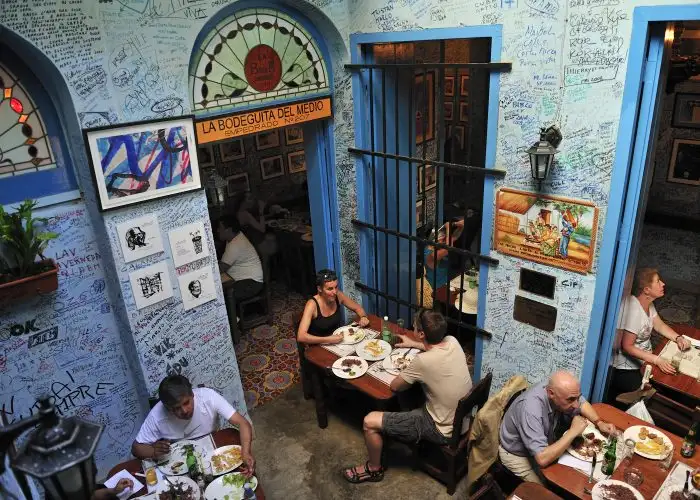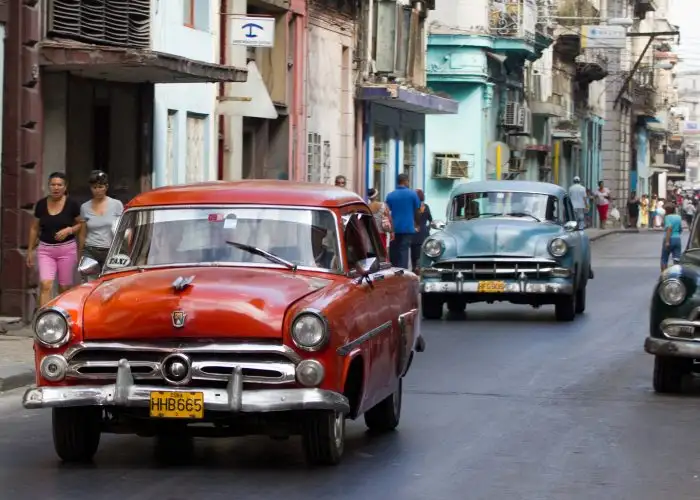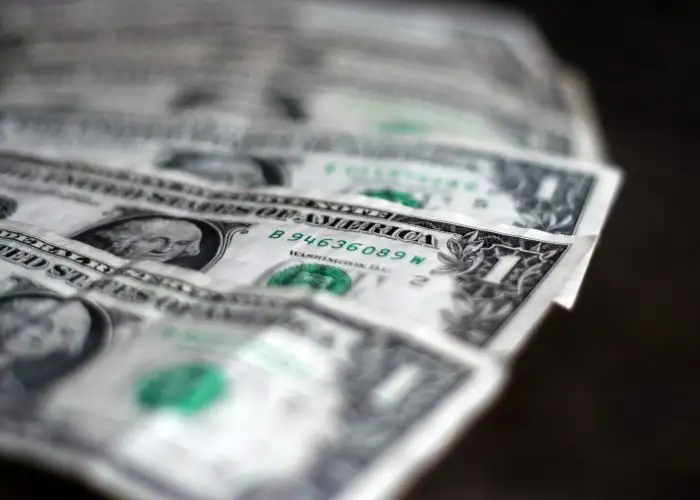Until recently, travel to Cuba from the U.S. was essentially off limits for those wishing to visit Cuba legally. That made it difficult for me to find accurate, up-to-the-minute Cuba travel tips when I was preparing for my own recent trip to Cuba.
After some reflection, here’s what I wish I’d known about how to travel to Cuba before I arrived in Havana. (Hint: Be prepared for currency confusion, and don’t leave home without an extra pair of shoes.)
Cuba Travel Tips: Essential Tips for Traveling to Cuba
Image Gallery

How to Travel to Cuba Legally
At the time of writing, the only way to travel to Cuba legally from the U.S. is under one of the 12 categories of authorized travel by the Department of Treasury's Office of Foreign Assets Control (OFAC). These categories include family visits, official government business, journalism, professional research and meetings, educational or religious activities, and humanitarian projects, among others. The easiest way to travel to Cuba from the U.S. is through an authorized tour company, like AccessTrips, that will organize a legal people-to-people itinerary on your behalf.

How to Travel to Cuba Legally
At the time of writing, the only way to travel to Cuba legally from the U.S. is under one of the 12 categories of authorized travel by the Department of Treasury's Office of Foreign Assets Control (OFAC). These categories include family visits, official government business, journalism, professional research and meetings, educational or religious activities, and humanitarian projects, among others. The easiest way to travel to Cuba from the U.S. is through an authorized tour company, like AccessTrips, that will organize a legal people-to-people itinerary on your behalf.

When Traveling to Cuba, Bring Everything You Need
On a typical overseas trip, I usually think that as long as I have my credit card and a passport book or passport card, I'll be okay. Whatever I forget I can always buy when I arrive at my destination. But in Cuba, you can't really run out to the nearest convenience store for necessities.
Stores are few and far between, and they only stock whatever goods are available that day. Items might be expired or could be a brand that you don't trust. So one of my top Cuba travel tips is to bring everything you think you might possibly need—from over-the-counter medicines to extra prescription drugs, and even extra shoes.
I packed my trusty broken-in walking shoes only to have them unexpectedly give me blisters on the first day. Finding sturdy walking shoes and blister Band-Aids would have taken hours, so I was grateful I'd thrown in an extra pair of flats that didn't rub the wounded areas.
This Cuba travel advice applies to money as well—your American credit and ATM cards are not likely to work in Cuba, so you won't have another way to get cash if you run out. Bring more money than you think you will need.
If there's one thing you need to remember about how to travel to Cuba, it's this: pack everything! You can always donate things like your travel toiletries at the end of the trip if you don't want to schlep them home.

Time Your Travel to Cuba around Cruise Ship Schedules
Wandering around Havana, I saw mostly individual tourists with a few smaller groups—until the day the cruise ship docked. All of a sudden, the small streets of Havana were totally swarmed by mobs of cruise-goers and the dynamic of the neighborhood totally changed. So if you want to avoid that kind of chaos, one of my top Cuba tips is to make sure you check the schedule of the cruise ships and don't go to the ports on the same day.

Know the Difference Between the CUP and CUC Currencies
Cuba has two currencies: the Cuban Convertible Peso (CUC) and the Cuban Peso (CUP). The conversion rate was 1 CUC to 26.5 CUP at the time I visited. So here's one very important Cuba travel tip: Don't mix up your currencies.
The CUC is what you, as a foreigner, will be given when you exchange your money. However, there are some things that are primarily available only to locals (like street food or ice cream) that can only be purchased with CUP, since the exchange rate is too big to give change when converting.
Be sure to check your money when you're given change as the bills are very similar in color and identical in size. Here's how to travel to Cuba and not mix up the currencies: The CUC has pictures of monuments on it, while the CUP has pictures of people on it.

How to Travel to Cuba from the U.S. Legally with a Group
I traveled to Cuba legally with Access Trips, which had boasted about its small group sizes. But I was still pleasantly surprised when I arrived and was placed with only four other travelers. The Access Trips Cuba Culinary Tour has a maximum group size of 10 people; for groups with more than five, Access Trips will split the group into two different cars.
This meant I was able to tour Cuba in a stylish classic car rather than a bus. My group ate at small restaurants without overwhelming them, and we were able to easily change the day's itinerary to accommodate something else that the group wanted to do (a feat that would be impossible on a tour bus of 30 people).
I saw a few big groups throughout my visit, and I noticed that everything they did took forever (understandable when you have so many strangers to herd). Go small and go for something that aligns with your interest. If your interests are in food and in meeting locals, Access Trips is the perfect choice.

Make Restaurant Reservations
Although my small group tour company had warned me that the best restaurants fill up in advance, I didn't think that I would need to make a reservation for a mid-week dinner. (Although we had a welcome and goodbye dinner scheduled for us, we had evenings free of the time.) That left me kicking myself when I missed out on dinner at the charming rooftop terrace of El Cocinero, which was totally booked for the entirety of my trip.
Take this important Cuba travel tip to heart: Book ahead if you don't want to get stuck eating at a tourist trap. My favorite eateries in Havana were Atelier, La Guarida, and La Fontana.
Most of the best food can be found at paladares, which are privately owned eateries (compared to most other restaurants, which are government-owned). Since most Cubans don't have regular access to Wi-Fi, don't expect to make an Open Table reservation. One of the most important tips for traveling to Cuba and eating well is to make your reservations by phone or ask your guide/concierge to do it for you as soon as you arrive in Cuba.

How to Travel in Cuba: Don't Rent a Car
Although renting a car in Cuba is possible, it's a daunting and expensive proposition. Gas stations are few and far between, and the roads are in pretty rough shape—which is bad news for rental car drivers, because if something on your car breaks there's no AAA equivalent to bail you out. And when you travel to Cuba from the U.S., you're very unlikely to find a vehicle that meets your safety standards (such has having a seatbelt).
Don't forget that the lack of Wi-Fi or phone data service means you'll be without GPS, too. So another one of the most important Cuba travel tips is to polish up on your map-reading skills if you do plan to drive.
If you're just sticking to Havana, you won't need a car (taxis are easy and affordable, and most of Havana is easy and safe for walking around). To get between cities, a tour group or private driver is your best bet.

Bring Canadian Dollars and Small Bills to Cuba
Most tips for traveling to Cuba point this out, but it can't be overstated: You'll be charged 10 percent by the Cuban government for exchanging U.S. dollars, so convert your U.S. currency to Canadian dollars before you go. You'll still be hit by a 3 percent financial transaction charge no matter what currency you're bringing (on top of any fees that the bank/hotel/airport levies), so be sure to factor that in when you're planning how much cash to bring to Cuba.
When you do convert your money, ask for some small bills and a few coins, which will come in handy later for tipping or buying small items. Many things are inexpensive in Cuba, and some places will have a hard time breaking larger bills.

How to Travel to Cuba When There's No Internet: Download an Offline map
I'm used to checking in somewhere and getting a free paper city map, or at least being able to pull up Google Maps. In Cuba, paper maps are hard to come by (and certainly aren't free), and Wi-Fi will cost you and be very slow when it comes to using apps. Download an offline map of Cuba and the cities you're visiting before you go.

Be Prepared for the Pollution in Cuba
If you suffer from allergies or breathing problems, check in with your doctor to see if he or she has any allergy-related tips for traveling to Cuba (especially to a big city like Havana) and pack extra medication or inhalers. Although Cuba's classic cars look cool, the majority are diesel—and there's certainly no such thing as air quality controls on them. City smog in Cuba can be eye-watering.
More from SmarterTravel:
- Cuba, Then and Now: Have U.S. Travelers Already Changed Cuba?
- These 6 U.S. Airlines Approved for Cuba Flights
- 8 Things You Need to Know About Traveling to Cuba in 2016
Caroline was hosted by Access Trips on their Culinary Cuba tour. See more of Caroline’s Cuba photos on Instagram @TravelWithCaroline and on Twitter @CarolineMorse1.
We hand-pick everything we recommend and select items through testing and reviews. Some products are sent to us free of charge with no incentive to offer a favorable review. We offer our unbiased opinions and do not accept compensation to review products. All items are in stock and prices are accurate at the time of publication. If you buy something through our links, we may earn a commission.
Related
Top Fares From
Today's Top Travel Deals
Brought to you by ShermansTravel
Greece: 9-Night Vacation, Incl. Meteora &...
Exoticca
 vacation
$2099+
vacation
$2099+
New Year Sale: Luxe, 9-Nt Alaska...
Oceania Cruises
 cruise
$3599+
cruise
$3599+
Ohio: Daily Car Rentals from Cincinnati
85OFF.com
 Car Rental
$19+
Car Rental
$19+




